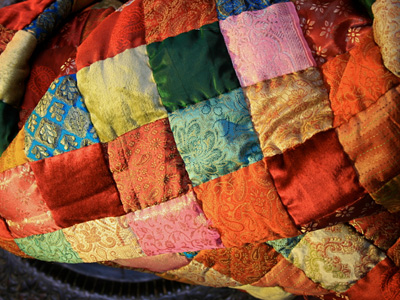

Textiles 02
This KS3 Design and Technology quiz tests you further on textiles. All textiles are made from fibres. The fibres may be natural and come from animals or plants. Or they may be synthetic and come from minerals such as coal or oil. There are even some synthetic fabrics that are made from plant materials. But whichever type of fabric you are using for your design, it needs joining together. The best way to join fabrics is by sewing - the yarn is as flexible as the fabric. When cutting fabrics, they need to be cut a little larger than the pattern to allow for sewing a seam.
Fabrics can be decorated in many ways. They can be dyed, screen printed, embroidered and more. Patterns can be created in the fabric at the weaving or knitting stage by using coloured yarns - carpets and your Christmas jumper are two good examples. Once a fabric has been turned into a garment, soft toy or other item, at some point it will need washing and drying. Every fabric article has a care label sewn into it. This contains standard symbols that tells the owner how the item should be washed.
Ready for more?
not all...
quizzers. Try to win a coveted spot on our Hall of Fame Page.






